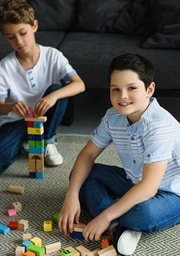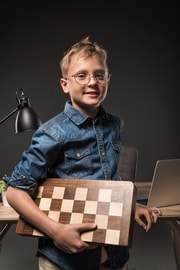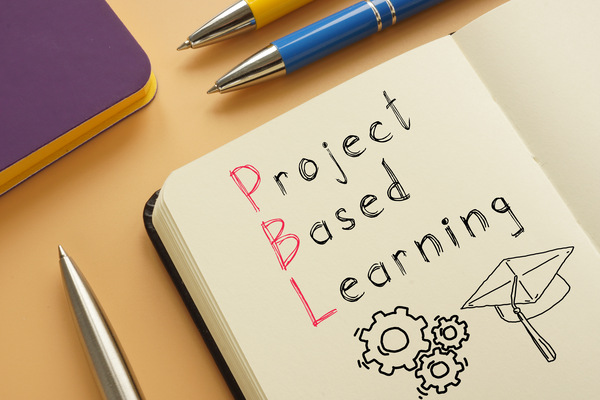How to Help Children With ADHD Successfully Study at Home
Helping children with Attention-Deficit/Hyperactivity Disorder (ADHD) successfully study at home can be incredibly challenging. This is because children with ADHD have trouble focusing for long periods, aren’t keen on details, and don’t want to engage in activities that take a lot of mental effort.
Studying requires all three of these things, and children diagnosed with ADHD aren’t exempt from studying because of their difficulties. So, we must find ways to make study sessions at home more enjoyable and productive for their unique needs.
Here are eight of those ways below:
Create a Designated Study Space
For a child with ADHD to successfully study at home, a designated study space is a must. A designated study room or corner for your children can help them be more productive. It can also help their brain know it’s time to focus on their studies every time they enter this space.
Decorate their designated study space with calming colors. Adopt a minimalist style. Be sure there’s room for exercise and play. Finally, kid-proof the space and make it as safe as possible.
When you use this study space with your children, be mindful of how you use your time in it.
Manage Time Attentively
Managing time attentively is a secret weapon in helping children with ADHD study effectively. Break up the time your child spends studying in a way that supports their unique needs.
For example, incorporate regular breaks in every session to ensure your children don’t get overwhelmed with the mental effort it takes to study. You could also introduce time management techniques to them, like the Pomodoro method, to limit distractions and procrastination.
Also, incorporating play into studying can help children with ADHD successfully study at home.
Incorporate Play into Studying
One of the best things you can do in a study session with a child with ADHD is incorporate elements of play into it. Children with ADHD need ways to release energy, especially during study time.
Making time for physical exercise, outdoor play, and creative activities can improve your children’s focus and help them control their emotions and impulses.
Take breaks to play during every study session. Also, incorporate fun, hands-on activities that help your kids learn the topic their studying.
Ask Teachers for Advice
Tapping your children’s teachers for advice on how to help them study and learn better is a brilliant move. Your children spend a lot of time with their teachers throughout the week. So, they likely know a lot about how your children learn best with ADHD.
Set up meetings with your children’s teachers to gain insight into how to use what’s working at school and home. Ask them specific questions about how to help your child retain information better and what kind of environment might be best for them to study in at home.
Enlist the Help of a Tutor
Not only is asking teachers for advice wise but so is enlisting the help of a tutor who primarily works with children with ADHD.
You can reach out to your child’s school and ask for information on tutors in the area. You can also search for tutors specializing in working with students with ADHD on the internet. Interview potential matches and introduce them to your child during these meetings to see how they connect.
You may have to cycle through a few tutors before finding the right one, but it’s worth the work.
Explore Using Digital Tools
Digital tools can also positively influence your children’s study sessions because they can help keep them focused and engaged.
For example, you can gamify studying to stimulate their brains and keep the process exciting. You can use projectors or your television to amplify a lesson. You can also use different apps to make studying more manageable.
Whatever digital tools you use to help your children with ADHD study, ensure they’re kid-friendly and easy to use.
Create a Circle of Support
Creating a circle of support comprised of other parents with children with ADHD can help you gather ideas for how to make studying better for your children at home. You’ll also have people who genuinely understand what you’re going through to lean on when times get tough.
It might also be a good idea to add a behavior specialist or counselor to your circle of support. A study on ADHD revealed that “about 6 out of 10 children had received some type of behavioral treatment or skills training.”
Behavioral therapists can help you find studying methods that work for your children’s particular needs. They can also help your children manage the frustrations and emotional triggers people living with ADHD often face.
Be Inherently Positive
Your circle of support can also help you become inherently positive, especially in situations when parents also are dealing with ADHD. Positive thinking and communication are integral to successful studying at home with children with ADHD.
The last thing you want to do is be frustrated or angry with a child navigating ADHD. Being that way can make them feel hopeless and inadequate. Instead, learn to lift them up at all times. Work on your mindset. And grow your patience as well.
Conclusion
It isn’t easy helping children with ADHD successfully study at home, but it’s essential if you want them to thrive. So, use the tips above to create a positive, productive study environment at home for your children to give them the best chance at excelling in their education despite being diagnosed with ADHD.
About the Author
 Katie Brenneman is a passionate writer specializing in education, mental health, family lifestyle and online safety. When she isn’t writing, you can find her with her nose buried in a book or hiking with her dog, Charlie. You can follow her on Twitter.
Katie Brenneman is a passionate writer specializing in education, mental health, family lifestyle and online safety. When she isn’t writing, you can find her with her nose buried in a book or hiking with her dog, Charlie. You can follow her on Twitter.








